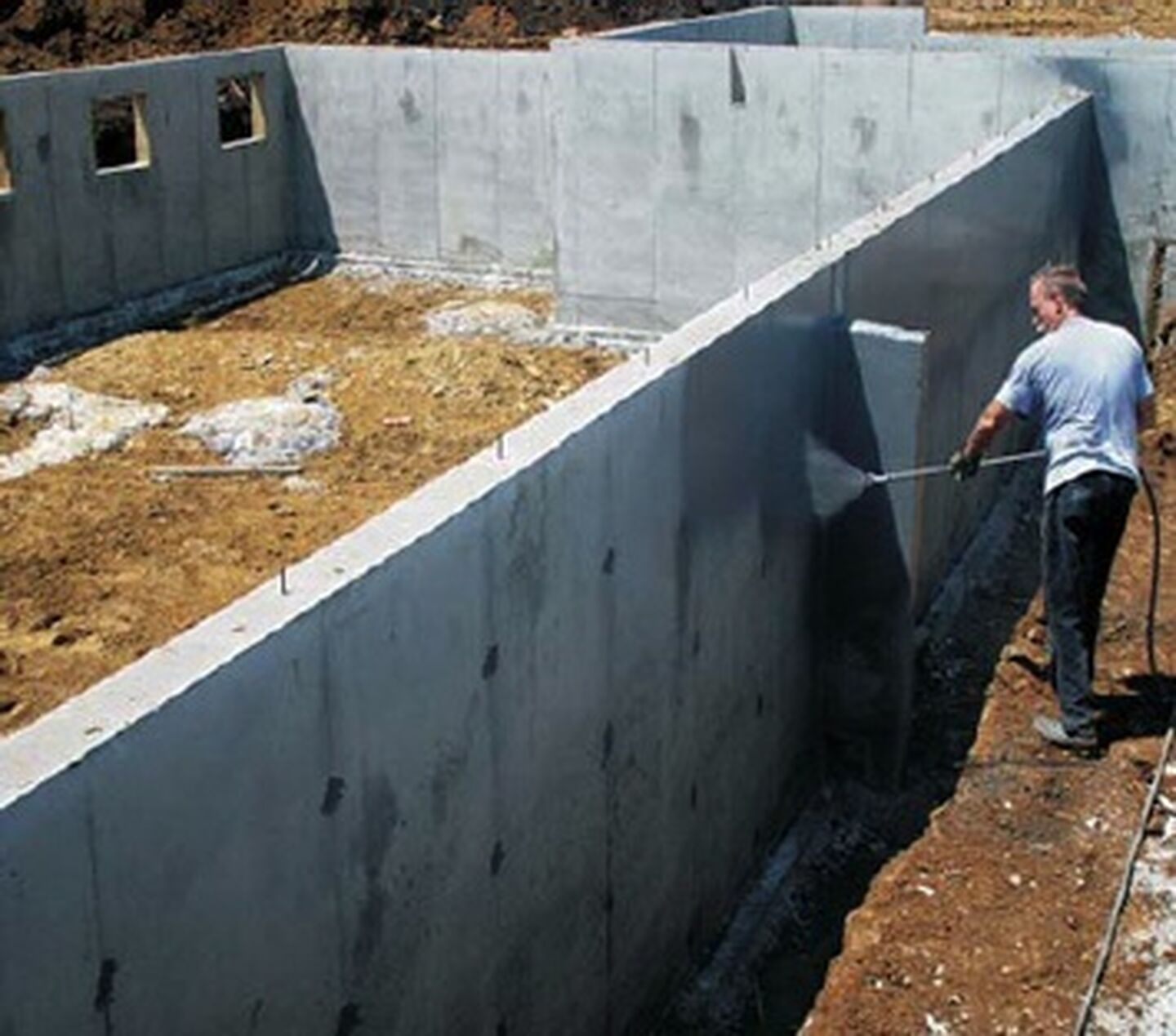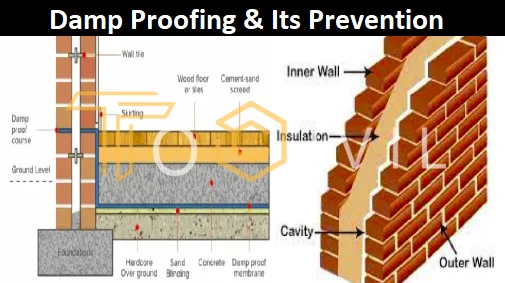Exploring the Different Strategies and Solutions for Effective Damp Proofing
Moisture in buildings positions substantial challenges to both architectural honesty and interior air quality. Numerous methods and solutions have actually emerged to battle this pervasive issue. From traditional damp-proof membranes to cutting-edge chemical therapies, each method uses distinct advantages. Understanding these choices is important for effective wetness control. However, picking the right solution relies on details building conditions and requirements, prompting additional exploration into the most effective damp proofing strategies offered.
Comprehending the Root Causes Of Dampness
Dampness can develop from numerous sources, comprehending these causes is essential for reliable removal. Generally, wetness stems from three main sources: climbing moist, permeating damp, and condensation. Increasing wet occurs when groundwater takes a trip up-wards via porous materials, such as block or stone, typically due to an absence of an efficient obstacle (damp specialist newcastle). Permeating wet is generally brought on by external elements, consisting of roof covering leakages, damaged gutters, or harmed walls, allowing water to infiltrate a property. Condensation, on the other hand, arises from excess wetness airborne, usually aggravated by bad air flow and temperature distinctions, leading to water droplets creating on surfaces. Identifying these underlying issues is essential, as each sort of dampness calls for a tailored strategy for removal. Appropriate analysis aids in figuring out one of the most reliable services, ultimately securing the structural integrity of a structure and improving indoor air quality
Standard Damp-Proof Membranes

Chemical Damp-Proofing Solutions
Chemical damp-proofing remedies supply a cutting-edge strategy to avoiding dampness intrusion in buildings. These techniques usually include the application of liquid chemicals that pass through masonry and create an obstacle against increasing moist. Typically made use of chemicals consist of silanes, siloxanes, and other water-repellent agents that respond with surface area materials to produce a hydrophobic layer.The application procedure typically needs exploration openings right into the walls, infusing the chemical option, and permitting it to treat. This approach is particularly advantageous for older structures where standard damp-proof membrane layers may be impractical. Chemical damp-proofing can be less turbulent and much more cost-effective than considerable renovation projects.While efficient, these services depend on correct application and ecological problems for peak performance. mould treatment newcastle. Normal upkeep and monitoring are necessary to ensure the long life of the damp-proofing therapy. On the whole, chemical damp-proofing stands for a flexible alternative for guarding structures against moisture-related damages
Cavity Wall Building Strategies
Dental caries wall building methods supply various advantages, particularly in moisture control and power performance. By incorporating an air space in between two layers of stonework, these wall surfaces successfully minimize water access while improving insulation. This combination not only shields structures from wetness yet also adds to reduced power usage.
Advantages of Dental Caries Wall Surfaces
When thinking about reliable damp proofing techniques, the advantages of tooth cavity wall surfaces stand apart prominently. Tooth cavity wall surfaces include two different layers, creating an air gap that properly decreases moisture infiltration. This style reduces the threat of moisture, as the external wall serves as a barrier versus rain and water access. Furthermore, tooth cavity wall surfaces enhance thermal insulation, which adds to power effectiveness by reducing warm loss. They likewise give audio insulation, helping to develop a quieter interior atmosphere. In addition, the air space permits ventilation, which assists in dampness control and reduces the chance of mold growth. These advantages not only boost the total comfort of a structure yet also add to its longevity and structural stability.
Wetness Control Methods
Efficient dampness control methods are crucial in cavity wall surface building and construction to ensure lasting security against wetness. One main technique includes the unification of weep openings, which promote water drain from the tooth cavity, preventing buildup. Additionally, using breathable membrane layers can assist manage wetness degrees while allowing entraped vapor to leave. Correct placement of insulation is likewise vital, as it should not block water drainage paths. In addition, making sure that the external leaves of the tooth cavity wall surface are built with waterproof materials boosts general toughness. Routine upkeep checks are vital to determine any kind of obstructions or damages early, guarding the framework's integrity. Inevitably, a mix of these techniques creates a robust defense versus dampness breach in cavity walls.
Insulation and Energy Efficiency
Insulation plays a crucial duty in boosting power performance within dental caries wall surface building. By integrating insulating products, these wall surfaces develop a thermal obstacle that decreases warmth loss and lowers power intake. Reliable insulation not just helps preserve a secure interior temperature but also mitigates the risk of moisture, as it avoids condensation within the wall dental caries. Different strategies, such as making use of inflexible foam boards or mineral woollen, can be utilized to attain perfect insulation performance. In addition, proper installation is important to assure that spaces and voids are lessened, which can otherwise endanger energy efficiency. Ultimately, a well-insulated cavity wall surface contributes significantly to overall sustainability and decreases heating and air conditioning expenses for house owners.
Outside Damp Proofing Methods
Outside moist proofing methods are necessary for protecting structures from wetness seepage. Two efficient techniques consist of the application of water-proof membranes and the setup of French drains pipes. These services help minimize water accumulation and maintain the stability of buildings.
Waterproof Membrane Layer Application
While numerous techniques exist for protecting against wetness access, the application of water-proof membrane layers continues to be a highly efficient exterior damp proofing method. These membrane layers are commonly made from materials such as polyethylene, rubber, or changed bitumen, supplying a durable obstacle against water penetration. The installment process includes using the membrane to the external surfaces of wall surfaces or foundations, ensuring total coverage to avoid leaks. Correct adhesion and securing at joints are important to making best use of effectiveness. Water resistant membrane layers can be applied in different forms, including fluid coatings and sheet membranes, enabling for adaptability based upon the details requirements of the structure. This technique not just safeguards buildings from moisture yet additionally enhances their durability and architectural integrity.
French Drain Setup
One reliable technique for taking care of groundwater and stopping wetness build-up around a building's foundation is the installation of a French drainpipe. This water drainage system contains a trench full of gravel and a perforated pipe that reroutes surface area water away from the structure. Correct setup requires mindful planning, making sure that the drain inclines away from the structure to assist in perfect water flow. Additionally, the area of the drainpipe is read more essential; it must be placed in areas prone to merging or excess wetness. Normal upkeep, consisting of clearing up particles from the gravel and ensuring the pipeline stays unobstructed, is important for lasting efficiency. Inevitably, a well-installed French drainpipe can significantly reduce the danger of water-related issues in cellars and structures.
Interior Waterproofing Approaches
Interior waterproofing approaches are crucial for protecting a building's inside from moisture infiltration and possible water damage. These methods usually entail the application of specialized materials and strategies designed to produce a dampness barrier within the structure. One typical strategy is using waterproof finishings or sealants on walls and floorings, which prevent dampness from penetrating surfaces.Additionally, setting up interior drain systems, such as sump pumps, can effectively handle water accumulation in cellars and creep spaces. An additional technique entails making use of vapor obstacles, which are set up to prevent dampness motion from the ground into living spaces.Moreover, attending to any kind of splits or gaps in walls or foundations with appropriate sealants guarantees a detailed defense versus water invasion. By implementing these indoor waterproofing strategies, residential property proprietors can greatly minimize the threat of mold growth, structural damage, and various other moisture-related concerns. Correct execution of these techniques is important for long-term protection and building integrity.
Regular Upkeep and Assessment Practices
Routine maintenance and inspection techniques are crucial for ensuring the lasting performance of moist proofing services in any structure. Routine checks enable homeowner to determine early signs of moisture breach, such as peeling off paint, mold growth, and musty smells. These indicators can signify underlying problems that require prompt attention.Inspections ought to be conducted at the very least yearly, concentrating on susceptible locations like basements, crawl areas, and exterior wall surfaces. Throughout these analyses, homeowner need to check out sealants, water drainage systems, and ventilation to verify they operate correctly.Additionally, keeping downspouts and gutters is essential, as stopped up systems can lead to water buildup near the foundation. Carrying out a normal maintenance timetable, along with timely fixings, can considerably prolong the life-span of moist proofing steps and safeguard the architectural honesty of the structure. Proactive measures ultimately add to the overall health and wellness of the living environment.
Frequently Asked Concerns
How Much Time Does Damp Proofing Typically Last?
The duration of moist proofing efficiency differs, typically lasting between 20 to 50 years. Elements such as application top quality, ecological conditions, and maintenance methods greatly influence the longevity of the moist proofing treatment.

Can I Damp Proof My Home Myself?
The individual contemplated the expediency of DIY damp proofing. With appropriate research study and the ideal products, it is possible. They also recognized the relevance of specialist advice to assure resilient efficiency and avoid future issues.
What Are the Indicators of Inadequate Damp Proofing?
Indications of ineffective moist proofing include persistent stuffy smells, visible mold development, peeling paint, damp spots on walls, and wood degeneration - damp removal newcastle. Home owners must attend to these issues promptly to protect against additional damage and wellness issues
Does Damp Proofing Affect Indoor Air Quality?

Exactly How Much Does Professional Damp Proofing Cost?
Specialist wet proofing costs vary considerably, generally ranging from $1,000 to $5,000 depending on the property's dimension, the level of the wet problem, and picked techniques. Each circumstance requires a customized assessment for accurate pricing. Commonly, dampness stems from three main resources: rising moist, permeating moist, and condensation. When taking into consideration effective damp proofing methods, the advantages of cavity wall surfaces stand out prominently. Exterior moist proofing approaches are essential for shielding structures from moisture infiltration. While numerous methods exist for protecting against moisture access, the application of waterproof membranes remains an extremely reliable exterior wet proofing strategy. Signs of inefficient moist proofing include persistent moldy odors, visible mold growth, peeling off paint, wet spots on wall surfaces, and timber degeneration.